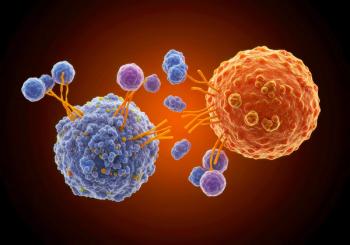
CRISPR-Cas9 Targets RNA in Live Cells for First Time
Reseach may lead to new therapeutic approaches that correct disease-causing RNA behaviors.
The DNA editing technique CRISPR has shown great promise across a host of conditions, but recently scientists from the University of California for the first time found a successful method for targeting RNA, with CRISPR-Cas9 to RNA.
Although DNA is responsible for the individuality of each person, many diseases have been linked to the molecule RNA.
RNA carries genetic code from the cell’s nucleus. Its location within a cell can affect the production of proteins and whether they are in the right location at the right time.
“This work is the first example, to our knowledge, of targeting RNA in living cells with CRISPR-Cas9,” said senior author Gene Yeo, PhD. “Our current work focuses on tracking the movement of RNA inside the cell, but future developments could enable researchers to measure other RNA features or advance therapeutic approaches to correct disease-causing RNA behaviors.”
In previous years, researchers have discovered that they could use CRISPR-Cas9, a naturally occurring defense mechanism bacteria that fends off invading bacteria, and apply it to editing genes in mammalian systems. However, CRISPR-Cas9 could only be used to manipulate the DNA.
A “guide” RNA is designed to match the sequence of a specific targeted gene. The RNA then directs the Cas9 enzyme to a specific spot in the genome, where it is able to cut the DNA.
The cells repair the DNA break inaccurately causing the gene to inactivate or researchers can replace the section adjacent to the cut with the right version of the gene.
In the current study published in Cell, researchers used the technique to develop a more flexible means for targeting RNA in living cells, with RNA-targeted Cas9 (RCas9).
By building on prior research by co-author Jennifer Doudna, PhD, researchers were able to design PAMmer, a short nucleic acid that is able to direct Cas9 to an RNA molecule with the help of the guide RNA.
During the current study, the team targeted RNA that encodes the proteins ACTB, TFRC, and CCNA2. Cas9 then fuses with a fluorescent protein, revealing RNA’s movement into stress granules.
Stress granules have been linked to neurodegenerative disorders like amyotrophic lateral sclerosis (ALS).
This method allowed researchers to track RNA in living cells over time, without the need for artificial tags that are commonly used and can interfere with normal cellular processes.
“CRISPR-Cas9 is supporting a revolution in genomics and medicine based on its ability to target and modify human DNA,” said first study author, David Nelles. “DNA is the fundamental building block of life and we are just beginning to see the implications of genome engineering with CRISPR-Cas9, but many diseases including cancer and autism are linked to problems with another fundamental biological molecule -- RNA.”
Newsletter
Stay informed on drug updates, treatment guidelines, and pharmacy practice trends—subscribe to Pharmacy Times for weekly clinical insights.















































































































































































































